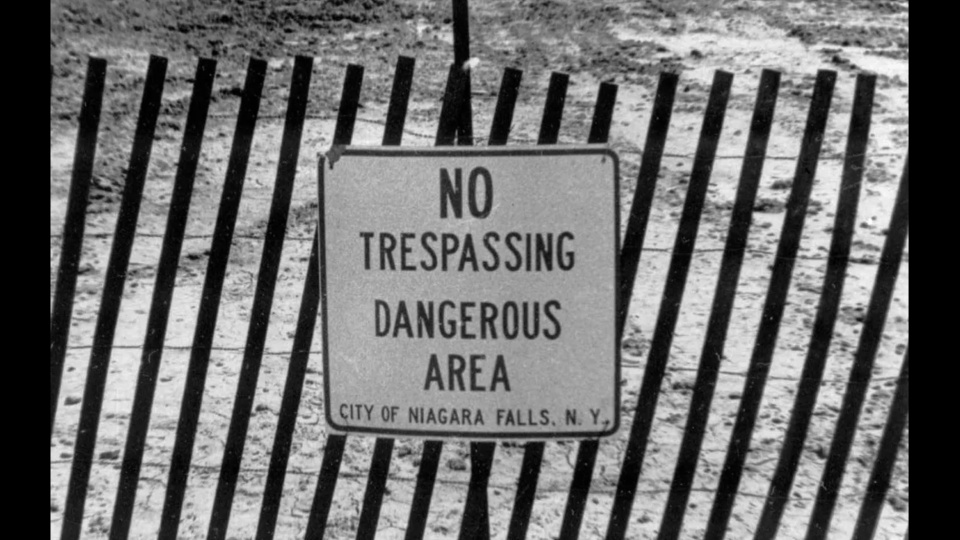
There is much to be learned from the most calamitous environmental disaster in American History—so far. The PBS movie Poisoned Ground: The Tragedy at Love Canal, written, produced, and directed by Jamila Ephron, is a horror story more frightening and heartbreaking than even Hollywood could inflict.
The Love Canal neighborhood of Niagara Falls was at first only notable in New York State history as the late 19th-century proposed site of a model planned community. Entrepreneur huckster William T. Love, a former railroad lawyer, sought to construct a canal and new town development to promote and house the area’s expanding population and industrial growth. Love sought to capitalize by improving shipping between Great Lakes Erie and Ontario. The Depression of 1893, followed by the economic downturn of 1907, quashed his schemes. He went bankrupt and fled to England. But the grounds for the initial Love Canal and its target for victimization by corporate malfeasance had been established.
Although population and industry in the Upstate New York area was burgeoning, the enterprise was not successful. After Love’s labor was lost, the area was used at first for recreation, then largely as a post-World War II dumping ground for the City of Niagara Falls. The site went from public use to private, as it was sold to Hooker Chemical Company. Hooker continued to dump over 20,000 tons of chemical byproducts of dyes, rubber synthetics, caustics, alkalines, solvents, chlorinated hydrocarbons, and other chemicals for another decade.
As Niagara Falls’ population grew, the town looked to build a new school over the old canal dumping site. Internal documents show that R.L. Murray, Hooker Chemical’s President, understood that the spread of housing above the dump area could be a liability. He suggested that the sale of the dump could relieve the company from future liabilities for the buried chemicals. The school board agreed to purchase the land from Hooker Chemical for $1 and rejected restraints on its use though the company included liability limitation should lawsuits occur in the future.
Hooker was not alone in its chemical development of the area. In the 1970s, ten different large chemical companies—including Union Carbide, Olin, Goodrich, and Hooker—located on what became “Chemical Row” along the Niagara riverbank. As a child visiting Niagara Falls, I remember the pungent smells, the attempts to hold our breath as we drove through. The lethal byproducts of America’s celebrated chemical developments were barreled in huge drums, buried in stacks, and covered by ground. No one seemed to know, predict, or care about the ramifications.
But the rugged upstate weather, snows and freezing rains, wore away at the covering and the containers. Seepage occurred. Animals died. Children and even adults fell ill in noticeably disproportionate numbers and hideous ways. Asthma, kidney and bladder problems, birth defects, cancer, and behavioral changes became common.
The fierce Blizzard of ’77, that year’s version of generational storms, exposed the chemical companies’ shoddy handling of toxics. When snows melted, drums were exposed, collapsed, and chemicals oozed out. Black goo and foam sludge penetrated playgrounds and yards. Kids played near and in these slimy green black and blue lagoons. As they slid rocks there, the pits burst into flame. The soles of new sneakers burned. Chemical companies tried to claim it was tar and suggested manual removal strategies which further exposed residents in the newer housing.
The chemical companies tried to downplay events. The mayor of Niagara Falls worried about the image of the city and the tourist industry. Government didn’t want to scare off the chemical industry. Even the local newspaper editors censored reports of health effects.

Those left to deal directly with these health and safety catastrophes were the mothers of the children of Love Canal. Lois Gibbs had been drawn to the subsidized new housing. She later became the firebrand President of the Homeowners Association. Luella Kenny, who had lived in Niagara Falls her entire life, saw it as an ideal place to bring up her children until her child lost his life to it. Jannie Grant-Freeney, who led renters groups, continued to be discriminated against during the struggles as she was a Black woman renter rather than a homeowner.
As Ephron’s film shows, the women of Love Canal refused to be silenced by the chemical corporations and the politicians. These working-class women became experts in the effects of environmental exploitations. They publicized, demonstrated, and picketed. They pushed for studies and political action, taking their issue from local politicians to New York State Governor Hugh Carey to then-President Jimmy Carter, as well as the Environmental Protection Agency. They even took EPA officials hostage in a celebrated standoff with the agency to secure agreements to take action and gain compensation.
Poisoned Ground essentially becomes the story of how a determined group of self-taught women fought male-dominated corporations to gain some measure of compensation and relief. The struggle continues.
Poisoned Ground: The Tragedy at Love Canal premieres Monday, April 22, and streaming on PBS.org on its American Experience series.
We hope you appreciated this article. At People’s World, we believe news and information should be free and accessible to all, but we need your help. Our journalism is free of corporate influence and paywalls because we are totally reader-supported. Only you, our readers and supporters, make this possible. If you enjoy reading People’s World and the stories we bring you, please support our work by donating or becoming a monthly sustainer today. Thank you!










